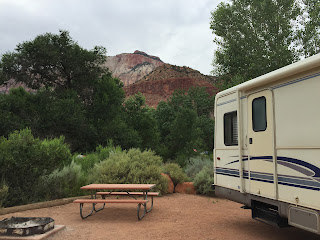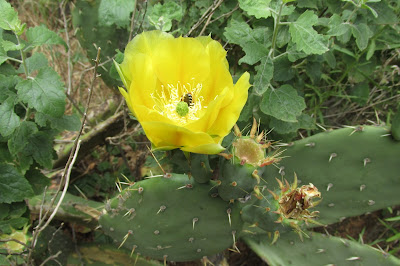If you love beautiful rocks, gems, meteorites, fossils and minerals, you’re attracted to the Tucson Gem and Mineral Show like moths to a light. It’s not about buying anything, or needing anything, it’s just about the wonder and beauty of it all. Every year, a fellow docent and I work at the Desert Museum’s booth at the TGMS show at the Convention Center, and it’s really a fun gig. Along the upper hallway, not on the main show floor, are the booths of lapidary clubs, geological societies, museums, state parks, government organizations, educational institutions and the like. That’s where we are. Everyone who enters the show must pass our way. Our main mission is to tell people about the Desert Museum, and secondarily, about our connection to the geology of the Sonoran Desert. This year we had both the mineral specimen kit and the meteorite kit, which bring interested visitors over to our booth. It’s wonderful to see so many adults bringing their children, and how deeply interested the children are.
After our shift is over, we can go down to the main show floor, where hundreds of booths and exhibits await. One of the main attractions of this particular show is the incredible array of spectacular mineral exhibits, usually centered around the theme for the year. This year’s theme was Shades of Blue, somewhat of a departure from past years, which normally feature a specific gem or mineral.
Arizona, and the Desert Museum in particular, are in the enviable position of having something of an “embarrassment of riches” when it comes to blue minerals. “The Desert Museum's permanent mineral collection has been touted as one of the finest regional mineral collections in the world. The strength of the collection lies in the museum's narrow focus of attention: minerals from the Sonoran Desert region of Arizona, Sonora and Baja, California.” (ASDM website)
The blues in the various exhibits ran the gamut from sky-blue turquoise, blue-green chrysocolla, intense indigo of azurite, on to the reddish-blue shades of amethyst.
The Museum’s mineral collection is nothing short of breathtaking, and from this, they select some of the most exquisite to display at the Gem Show. The minor copper ores of azurite, chrysocolla and turquoise are the most well-known of our blue minerals. And, of these, we have an abundance. Bisbee is known the world over for the quality and beauty of the azurite found there, and that is the centerpiece of so many ‘blue’ mineral exhibits.
You need know nothing about the powerful forces that created these wonders in order to appreciate their beauty. And yet, we cannot help but be awed by those forces, still so active today. So, is geology a ‘living’ science like the others represented at the Desert Museum? What is your take?
From the Desert Museum’s website: “. . . the visitor to ASDM's earth sciences center has been treated to a full spectrum of the truly "living" science of geology - from the raging forces that create wonderlands in the underground caverns, to the jewel-like products of tremendous tectonic forges.”
So, until you can go to next year’s gem and mineral show, come to the Desert Museum and take a trip down to the Earth Sciences Center and just drink in the beauty of nature’s creations.

























